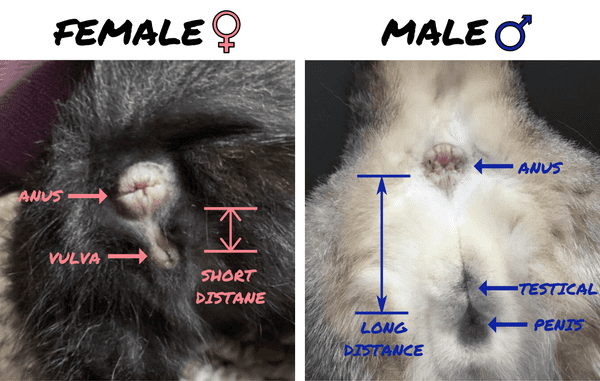Key Takeaways:
- 1. The easiest and most accurate way to determine a cat's gender is by examining their genitalia.
- 2. Male cats have a small distance between the anus and the penis, while female cats have a larger distance between the anus and the vulva.
- 3. It's important to handle cats gently and with care when trying to determine their gender.
- 4. If you're unsure about determining your cat's gender, it's best to consult a veterinarian for assistance.
- 5. Knowing your cat's gender can help with proper identification, health care, and understanding their behavior patterns.
Are you the proud owner of a furry feline friend? If so, have you ever wondered whether your cat is a boy or a girl? Understanding your cat's gender may seem like a trivial matter, but it can actually provide valuable insights into their behavior and health. By delving into this subject, you'll gain a deeper understanding of your cat's needs and be better equipped to provide them with the care they deserve. So, let's embark on this fascinating journey together as we uncover the secrets behind determining your cat's gender. Get ready to unravel the mystery and unlock a whole new level of connection with your beloved pet!
Physical Characteristics That Help Determine a Cat's Gender
Differences in Face Shape Between Male and Female Cats
When it comes to determining the gender of a cat, one physical characteristic to look at is the shape of their face. Male cats tend to have broader and more angular faces compared to female cats. Their cheeks are often wider, giving them a more masculine appearance. On the other hand, female cats typically have rounder and softer facial features.
To identify these differences, take a close look at your cat's face. If their face appears wide and angular, it is likely a male cat. If their face looks rounder and softer, it is probably a female cat. However, it's important to note that this method may not be foolproof as there can be variations in face shape among individual cats.
Traits in a Cat's Body Structure that Indicate its Gender
Besides the face shape, another way to determine a cat's gender is by examining its body structure. Male cats generally have larger and more muscular bodies compared to females. They tend to be heavier and longer in size. On the other hand, female cats are usually smaller and more petite.
You can observe these traits by looking at your cat from above or from the side. If your cat has a large and muscular body with visible muscle definition, it is likely a male cat. If your cat appears smaller and more delicate in comparison, it is probably a female cat.
Can Fur Color or Pattern Provide Clues About a Cat's Gender?
Fur color or pattern alone cannot reliably determine the gender of a cat. While certain breeds may have specific color patterns associated with each gender, this is not true for all cats. For example, some calico cats, which have a three-color coat pattern, are almost always female. However, this is not a definitive rule as there can be rare cases of male calico cats.
It's important to remember that cat fur color and pattern are determined by genetics and do not directly correlate with gender. Therefore, relying solely on fur color or pattern to determine the gender of a cat can lead to inaccuracies.
Differences in Behavior and Temperament Between Male and Female Cats
Male Cat Behavior and Temperament
Male cats tend to exhibit certain behaviors and temperament traits that differ from female cats. They are often more territorial and may engage in marking their territory by spraying urine. They can also be more prone to aggression, especially when it comes to defending their territory or competing for mates.
In terms of temperament, male cats are known to be more independent and adventurous. They may roam farther from home compared to females. Male cats also tend to be more playful and energetic throughout their lives.
Female Cat Behavior and Temperament
Female cats generally have different behavior patterns compared to males. They are typically less territorial and less likely to spray urine to mark their territory. Female cats also tend to be less aggressive overall.
In terms of temperament, female cats are often seen as more affectionate and sociable. They may enjoy spending time with their human companions and seek attention through cuddling or purring. Female cats also tend to have a maternal instinct, even if they haven't had kittens.
Traits in a Cat's Body Structure that Indicate its Gender
Physical Differences
Male and female cats have distinct physical differences that can help determine their gender. One noticeable trait is the size of their body. Male cats tend to be larger and more muscular than females. They have broader heads, thicker necks, and a more robust overall appearance. On the other hand, female cats are generally smaller and have a more slender body structure.
Facial Features
Another way to identify a cat's gender is by looking at their facial features. Male cats often possess prominent cheekbones and a broader face compared to females. Additionally, male cats may have thicker jowls or pouches on the sides of their faces, which are absent in females.
Diagram:
These physical traits can provide valuable clues when determining the gender of a cat, but it's important to note that they are not foolproof indicators. Some male cats may have smaller frames, while some female cats may appear larger due to factors like obesity or breed variations.
Can Fur Color or Pattern Provide Clues About a Cat's Gender?
Fur color or pattern alone cannot reliably determine a cat's gender. However, certain coat colors are more commonly associated with one gender over another due to genetic factors. For example, calico and tortoiseshell patterns are predominantly found in female cats because these traits are linked to having two X chromosomes.
While it is rare, male calico or tortoiseshell cats do exist but are usually sterile due to genetic abnormalities. Therefore, if you come across a calico or tortoiseshell cat, it is highly likely to be female.
It's important to remember that fur color and pattern should not be the sole basis for determining a cat's gender. Physical examination and other indicators, such as reproductive organs, should also be considered for accurate identification.
Differences in Behavior and Temperament Between Male and Female Cats
Male and female cats often exhibit distinct behavior and temperament traits. Male cats tend to be more territorial and may engage in marking behaviors like spraying urine to establish their territory. They can also be more prone to aggression, especially when competing for mates.
On the other hand, female cats are generally more nurturing and affectionate. They may display maternal instincts even without having had kittens. Female cats are typically less aggressive than males but can become protective of their young or territory if necessary.
It's important to note that individual personalities can vary greatly among cats, regardless of their gender. These general behavior patterns serve as guidelines but should not be seen as absolute rules for every male or female cat.
Determining a Cat's Gender Based on Reproductive Organs
One of the most accurate ways to determine a cat's gender is by examining its reproductive organs. Male cats have visible testicles located beneath the anus, while female cats have a genital opening called the vulva located below the anus.
In male cats, the distance between the anus and the genital opening is greater compared to females. This gap allows space for the testicles to descend into the scrotum during sexual maturity. In contrast, female cats have a shorter distance between these openings due to their internal reproductive system.
While this method requires careful observation, it provides a reliable way to determine a cat's gender once they reach sexual maturity.
Common Misconceptions About Determining a Cat's Gender, Debunked!
Coat Length and Gender
Contrary to popular belief, a cat's coat length does not indicate its gender. Both male and female cats can have long or short fur, regardless of their sex. The length and texture of a cat's coat are determined by genetic factors and breed characteristics rather than their gender.
Behavior Stereotypes
While there are general behavior differences between male and female cats, it is essential to remember that individual personalities play a significant role. Not all male cats will be aggressive or territorial, nor will all female cats be nurturing or docile. Each cat has its unique personality traits that may deviate from the typical stereotypes associated with their gender.
By understanding these common misconceptions, we can avoid making assumptions about a cat's gender based on inaccurate information. It is always best to rely on physical examination and reproductive organ observation for accurate identification.
In conclusion, determining a cat's gender can be done by looking at their genitalia and certain physical characteristics. It is important to handle cats with care and seek guidance from a veterinarian if unsure.
What is the male and female gender of cat?
Unlike humans, animals like cats, snakes, and mosquitoes do not have specific masculine or feminine genders. Instead, we use terms like male or female to indicate their gender. However, when a female cat is pregnant or has recently given birth, she is referred to as a "queen," while a male cat is called a "tom" or "tomcat."
What are the gender specific cat colors?
Because males have one X and one Y chromosome, their fur color will either be black or orange. If the colors are diluted, it can appear as gray (referred to as blue by professionals) or yellow (referred to as cream by professionals). It is rare for a male cat to have both black and orange fur, typically indicating that they have two X chromosomes. Orange females are not commonly seen.
Can you tell a kittens gender at 2 weeks?
When kittens are two weeks old, breeders often describe their genitalia as looking like punctuation marks. A female kitten's genitals will look like an upside-down exclamation point, with the vertical vaginal opening located just below the anus and with very little space between them (when the cat is upside down and facing you).
Can cats have both genders?
Lionesses have been experiencing hormonal imbalances that have led to the growth of manes, which is typically a characteristic seen in male lions who have gone through puberty. Additionally, there have been rare cases of cats being born with both male and female reproductive organs, known as hermaphrodite cats.
Are orange cats always male?
There is a widespread belief that all orange cats are male, but this is not true. Around 80% of orange cats are indeed male. The color of a cat's fur is determined by genetics related to their gender, so orange cats get their color from their mother. Female cats require orange genes from both parents, rather than just one, to have orange fur.
Do all male cats spray?
Spraying can be done by both male and female cats, but unneutered males are the most prone to marking. Their urine also has the strongest scent. Even after being neutered, about 5% of females and 10% of males may continue to mark their territory.
















